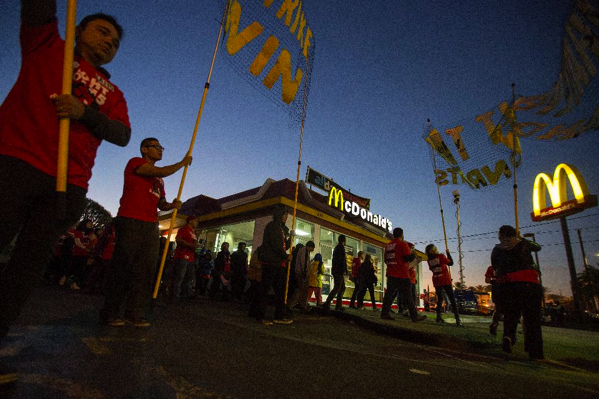
As the labor union-backed Fight for $15 begins yet another nationwide strike on November 29, I have a simple message for the protest organizers and the reporters covering them: I told you so.
It brings me no joy to write these words. The push for a $15 starter wage has negatively impacted the career prospects of employees who were just getting started in the workforce while extinguishing the businesses that employed them. I wish it were not so. But it’s important to document these consequences, lest policymakers elsewhere decide that the $15 movement is worth embracing.
Let’s start with automation. In 2013, when the Fight for $15 was still in its growth stage, I and others warned that union demands for a much higher minimum wage would force businesses with small profit margins to replace full-service employees with costly investments in self-service alternatives. At the time, labor groups accused business owners of crying wolf. It turns out the wolf was real.
Earlier this month, McDonald’s announced the nationwide roll-out of touchscreen self-service kiosks. In a video the company released to showcase the new customer experience, it’s striking to see employees who once would have managed a cash register now reduced to monitoring a customer’s choices at an iPad-style kiosk.
It’s not just McDonald’s that has embraced job-replacing technology. Numerous restaurant chains (both quick service and full service) have looked to computer tablets as a solution for rising labor costs that won’t adversely impact the customer’s experience. Eatsa, a fully-automated restaurant concept, now has five locations—all in cities or states that have embraced a $15 minimum wage. And in a scene stolen from The Jetsons, the Starship delivery robot is now navigating the streets of San Francisco with groceries and other consumer goods. The company’s founder pointed to a rising minimum wage as a key factor driving the growth of his automated delivery business.
Of course, not all businesses have the capital necessary to shift from full-service to self-service. And that brings me to my next correct prediction–that a $15 minimum wage would force many small businesses to lay off staff, seek less-costly locations, or close altogether.